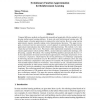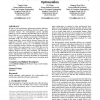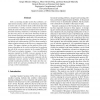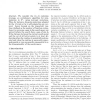102 search results - page 9 / 21 » Peer-to-peer evolutionary algorithms with adaptive autonomou... |
CORR
2010
Springer
13 years 7 months ago
2010
Springer
Temporal difference methods are theoretically grounded and empirically effective methods for addressing reinforcement learning problems. In most real-world reinforcement learning ...
PPSN
2004
Springer
14 years 25 days ago
2004
Springer
Abstract. Evolution Strategies, Evolutionary Algorithms based on Gaussian mutation and deterministic selection, are today considered the best choice as far as parameter optimizatio...
GECCO
2008
Springer
13 years 8 months ago
2008
Springer
In order to solve nonstationary optimization problems efficiently, evolutionary algorithms need sufficient diversity to adapt to environmental changes. The dual-population genetic...
HIS
2008
13 years 9 months ago
2008
XCS is a learning classifier system that combines a reinforcement learning scheme with evolutionary algorithms to evolve rule sets on-line by means of the interaction with an envi...
CEC
2005
IEEE
14 years 1 months ago
2005
IEEE
We consider the (1+λ) evolution strategy, an evolutionary algorithm for minimization in Rn , using isotropic mutations. Thus, for instance, Gaussian mutations adapted by the 1/5-r...




